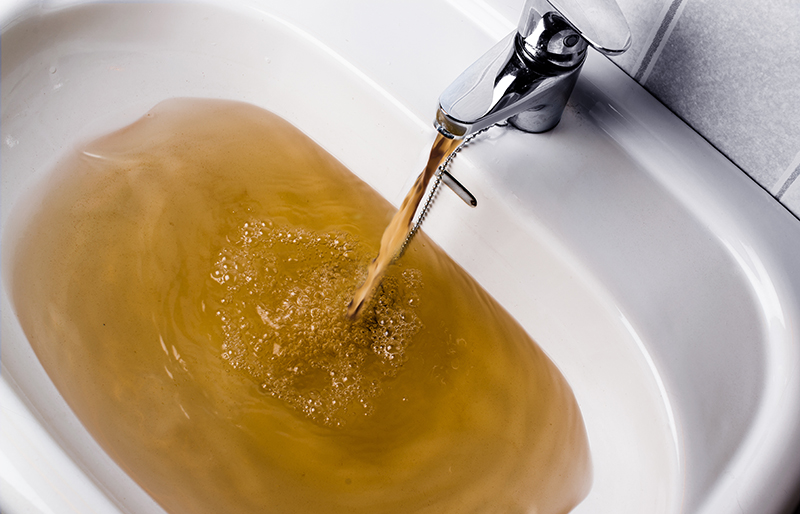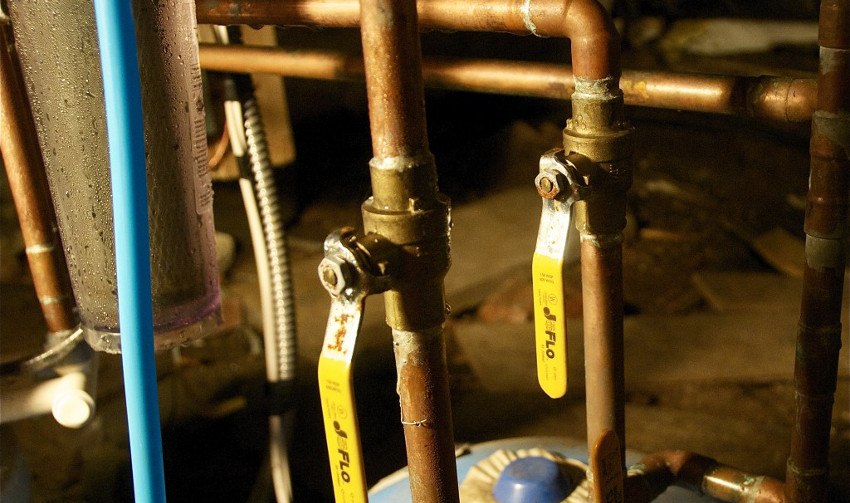Are you hunting for resources on Why is My Home Making Strange Plumbing Noises?

To diagnose noisy plumbing, it is very important to determine first whether the unwanted noises take place on the system's inlet side-in other words, when water is turned on-or on the drain side. Sounds on the inlet side have actually differed causes: excessive water pressure, used shutoff and also faucet parts, incorrectly connected pumps or other home appliances, improperly positioned pipeline bolts, and plumbing runs containing a lot of tight bends or various other limitations. Sounds on the drainpipe side generally stem from poor location or, as with some inlet side noise, a design including limited bends.
Hissing
Hissing sound that happens when a tap is opened somewhat usually signals too much water stress. Consult your neighborhood public utility if you believe this trouble; it will certainly have the ability to inform you the water stress in your location and can install a pressurereducing valve on the incoming water supply pipe if necessary.
Thudding
Thudding sound, often accompanied by shuddering pipelines, when a tap or device shutoff is switched off is a problem called water hammer. The noise as well as vibration are caused by the reverberating wave of pressure in the water, which instantly has no area to go. Often opening a valve that releases water promptly into a section of piping containing a restriction, arm joint, or tee installation can create the same problem.
Water hammer can normally be treated by setting up fittings called air chambers or shock absorbers in the plumbing to which the problem valves or faucets are attached. These gadgets enable the shock wave created by the halted circulation of water to dissipate airborne they consist of, which (unlike water) is compressible.
Older plumbing systems may have short upright areas of capped pipe behind wall surfaces on faucet runs for the very same function; these can ultimately fill with water, lowering or ruining their efficiency. The cure is to drain pipes the water system entirely by turning off the main water shutoff and opening up all faucets. Then open up the primary supply valve and also close the taps one at a time, beginning with the faucet nearest the valve and also ending with the one farthest away.
Chattering or Shrieking
Intense chattering or shrilling that happens when a valve or tap is activated, and that usually goes away when the fitting is opened totally, signals loose or defective interior parts. The option is to replace the shutoff or tap with a brand-new one.
Pumps and devices such as washing equipments as well as dish washers can transfer electric motor noise to pipelines if they are incorrectly attached. Link such products to plumbing with plastic or rubber hoses-never rigid pipe-to isolate them.
Other Inlet Side Noises
Squeaking, squeaking, damaging, snapping, and also tapping generally are caused by the development or contraction of pipes, normally copper ones supplying warm water. The audios happen as the pipelines slide against loosened fasteners or strike close-by residence framing. You can commonly pinpoint the location of the issue if the pipelines are exposed; simply adhere to the noise when the pipelines are making noise. Probably you will certainly discover a loosened pipeline wall mount or an area where pipes lie so near to flooring joists or various other framing pieces that they clatter against them. Affixing foam pipeline insulation around the pipelines at the point of call need to remedy the issue. Make sure bands and also wall mounts are secure and offer sufficient assistance. Where feasible, pipeline fasteners must be affixed to substantial structural elements such as foundation walls rather than to framing; doing so minimizes the transmission of resonances from plumbing to surface areas that can intensify as well as transfer them. If connecting bolts to framework is inescapable, cover pipelines with insulation or various other resistant product where they get in touch with fasteners, as well as sandwich completions of brand-new bolts in between rubber washing machines when mounting them.
Dealing with plumbing runs that suffer from flow-restricting limited or numerous bends is a last resort that should be undertaken only after seeking advice from a proficient plumbing specialist. Regrettably, this circumstance is relatively typical in older houses that may not have been constructed with interior plumbing or that have actually seen a number of remodels, especially by novices.
Drain Sound
On the drainpipe side of plumbing, the principal goals are to get rid of surfaces that can be struck by falling or rushing water as well as to protect pipes to consist of inescapable audios.
In brand-new building, tubs, shower stalls, toilets, and also wallmounted sinks and also containers ought to be set on or against resistant underlayments to lower the transmission of noise via them. Water-saving commodes and also taps are less noisy than conventional models; mount them as opposed to older kinds even if codes in your location still permit using older fixtures.
Drains that do not run up and down to the cellar or that branch into horizontal pipe runs supported at floor joists or other mounting existing especially problematic noise troubles. Such pipelines are big enough to radiate substantial resonance; they likewise carry significant quantities of water, that makes the circumstance worse. In brand-new building, specify cast-iron soil pipelines (the big pipes that drain commodes) if you can manage them. Their massiveness has a lot of the noise made by water passing through them. Additionally, prevent routing drains in wall surfaces shown bedrooms and also spaces where people collect. Walls containing drains ought to be soundproofed as was described previously, utilizing double panels of sound-insulating fiber board and wallboard. Pipelines themselves can be wrapped with special fiberglass insulation created the function; such pipelines have an invulnerable vinyl skin (occasionally including lead). Results are not constantly acceptable.
WHY IS MY PLUMBING MAKING SO MUCH NOISE?
This noise indeed sounds like someone is banging a hammer against your pipes! It happens when a faucet is opened, allowed to run for a bit, then quickly shut — causing the rushing water to slam against the shut-off valve.
To remedy this, you’ll need to check and refill your air chamber. Air chambers are filled with — you guessed it — air and help absorb the shock of moving water (that comes to a sudden stop). Over time, these chambers can fill with water, making them less effective.
You’ll want to turn off your home’s water supply, then open ALL faucets (from the bathroom sink to outdoor hose bib) to drain your pipes. Then, turn the water back on and hopefully the noise stops! If you’re still hearing the sound, give us a call to examine further.
Whistles
Whistling sounds can be frustrating, as sometimes the source isn’t easily identified. However, if you can pinpoint which faucet or valve that may be the cause, you’ll likely encounter a worn gasket or washer — an easy fix if you replace the worn parts!Whistling sounds from elsewhere can mean a number of things — from high water pressure to mineral deposits. Your best plan of attack here is to give our plumbing experts a call. We’ll be able to determine where the noise is coming from and what the cause may be, then recommend an effective fix!
Cracks or Ticks
Cracking or ticking typically comes from hot water going through cold, copper pipes. This causes the copper to expand resulting in a cracking or ticking sound. Once the pipes stop expanding, the noise should stop as well.
Pro tip: you may want to lower the temperature of your water heater to see if that helps lessen the sound, or wrapping the pipe in insulation can also help muffle the noise.
Bangs
Bangs typically come from water pressure that’s too high. To test for high water pressure, get a pressure gauge and attach it to your faucet. Water pressure should be no higher than 80 psi (pounds per square inch) and also no lower than 40 psi. If you find a number greater than 80 psi, then you’ve found your problem!
Next step is to give us a call in order to install a pressure regulator. Trust us, you don’t want to wait to resolve this issue. Not only is the sound annoying, but high water pressure can be destructive to your home — including damaging certain appliances, like your washer and dishwasher.
Dripping
You might be accustom to the slow quiet drip your kitchen faucet makes. You might have even tuned out your bathroom sink dripping and drabbing all day long — but it’s time to find its cause.
A slow drip could signify a variety of easy to fix issues, such as a worn out O ring, or loose part. And by ignoring the drip, you could be wasting up to 2,000 gallons of water a year! So start conserving water — get it looked at ASAP.
https://www.pwessig.com/blog/2018/december/why-is-my-plumbing-making-so-much-noise-/

As a fervent reader on Why Do My Plumbing Pipes Make A Knocking Noise, I thought sharing that section was worth the trouble. Kindly take the time to share this page if you appreciated it. Thanks so much for your time spent reading it.
Visit Our Website
Comments on “Plumbing Noise Checklist”